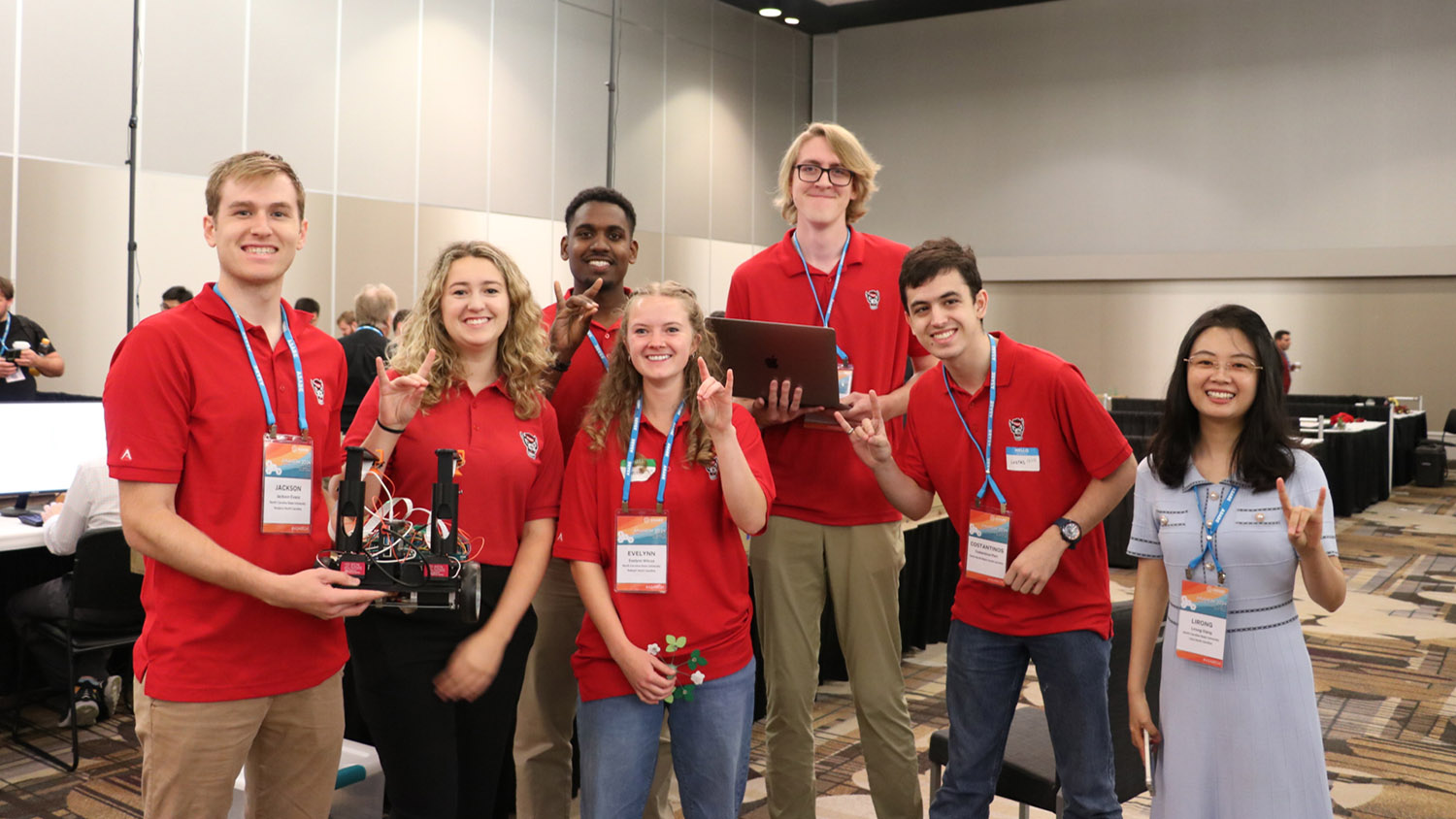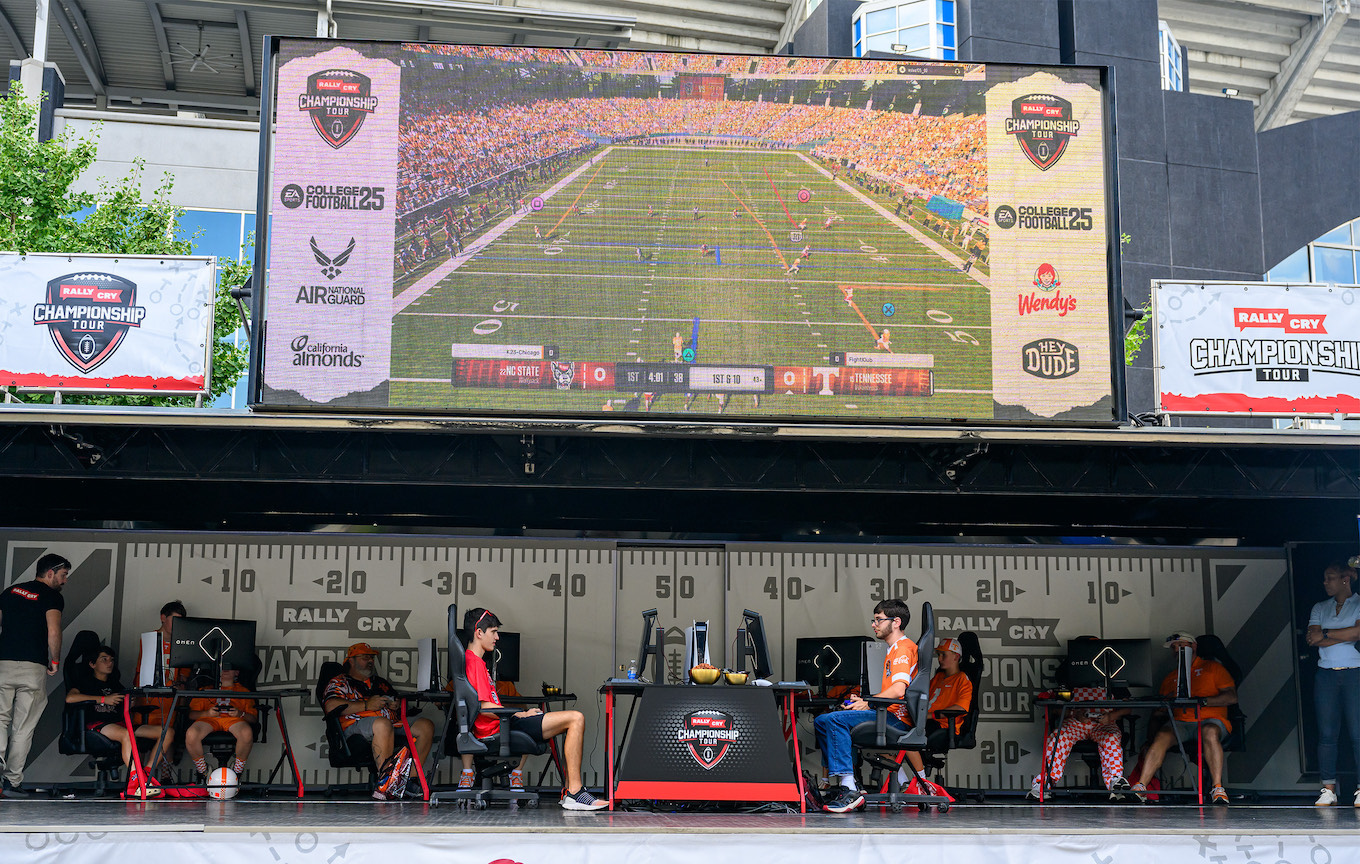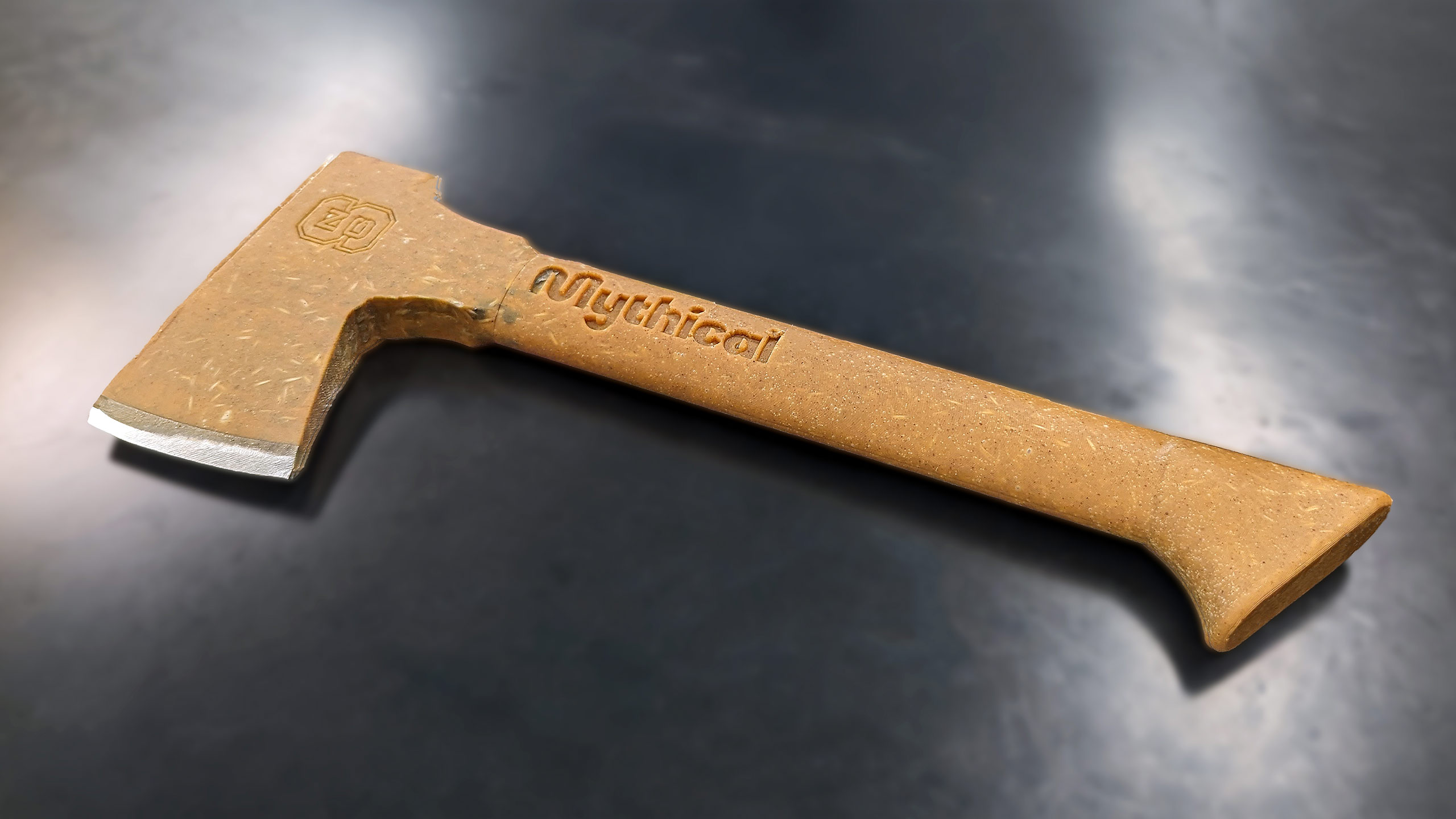Headline
Excerpt
By Sarah Stone
Every four years, leaders from all of the textile industry’s vast and varied sectors across the world gather in one place for ITMA. The weeklong exhibition spotlights emerging technologies, processes and trends, and provides a unique opportunity for collaboration to push those innovations forward.
It’s no surprise, then, that the Wilson College of Textiles had such a large presence at ITMA 2023. More than 80 students, staff and faculty from the Wilson College of Textiles traveled to Milan, Italy for the world’s largest textile and garment technology exhibition.
Each walked away with something valuable, from industry connections to an understanding of trends driving textiles forward, and, of course, memories made exploring Milan.
Watch the video below to get a look at ITMA by the numbers:
Sharing research with an international audience
More than half a dozen Wilson College faculty and graduate students presented their research to ITMA visitors.
“It took me a while to realize just how big of an honor it was to get to speak at ITMA,” M.S. Textile Chemistry student Jeannie Egan says. An ITMA committee selected her to be one of only 12 speakers participating in its sustainability and circularity program.
For Egan, the size of the exhibition alone – more than 110,000 visitors from over 140 countries – made for an unmatched opportunity to get the word out about her textile recycling research.
“I got to talk to some really interesting people afterwards and I found out that a number of people internationally have been following my research, which was crazy,” she says.
Much of the exhibition centered around sustainable innovations in the industry, including the sold out Textile Colourants and Chemicals Forum. One of the innovators the audience paid to see was Research Assistant Professor Tova Williams, who launched the Sustainable Dye Chemistry Lab just last year.

“It is my vision for my laboratory to be a globally recognized dye/color chemistry laboratory, and speaking at the Textile Colourants and Chemicals forum certainly helped fulfill my vision, as attendees were from around the world,” Williams says. “I received positive feedback and excellent questions following my talk, motivating me to continue leading my research laboratory’s pursuits to design and develop sustainable dyes and coloration methods.”
Providing opportunities for junior faculty members
Attending ITMA also provided Williams with the chance to make connections with potential research partners and learn about other innovations in the field of sustainable dyes and colorants.

“This was my first time attending ITMA, and it far exceeded my expectations,” she says. “I could not imagine ahead of time how large the exhibition would be and how many companies were represented.”
About half a dozen other junior faculty members from the Wilson College joined Williams in attending ITMA. Both academic departments funded the valuable career development experience for those assistant professors and associate professors, including travel, hotel and registration costs.
Undergraduate students gain international textile industry experience
These costs were also taken care of for all 37 undergraduate students from the college who attended ITMA, thanks to a combination of scholarship funds, enhancement funds and endowments.
“ITMA has given me more of an understanding of what I could possibly do in textiles. You learn about so much in class, but coming here really put those lessons in perspective for me,” textile engineering (TE) student Anndriana Hodges says.

Faculty tasked each student with writing an essay about an industry trend or innovation showcased at ITMA, further strengthening those connections between the classroom and the real world. Topics for research papers ranged from artificial intelligence (AI) to nonwovens, dyes and garment production technology.
“A lot of the AI involvement that I’ve seen so far at ITMA is about detecting defects in fabrics. I expect it to be present in other areas, too,” TE student Niamh Williams says. “It’s been interesting to see what people are choosing to apply AI to.”
For many of these students, ITMA opened their eyes to just how many ways they could apply a textiles education in their careers.

“I had never realized how global the industry is,” TE student Amanda O’Brien says. “I could really work anywhere.”
“Just seeing the plethora of businesses and also the connections that NC State has throughout every sector within textiles has been really cool,” TE student Cooper Putnam adds. “There have been multiple times where I’ve walked up to a random company’s booth and then met someone who graduated from NC State.”

Outside of ITMA, they took every opportunity to experience Italy, from the Duomo di Milan and Milan’s fashion houses to Lake Como.
“We hiked up the mountain to a lighthouse all the way to the top,” O’Brien says. “It was so beautiful.”
Keeping the Wilson College on the cutting edge
ITMA provides a unique opportunity for the Zeis Textiles Extension (ZTE) to carry out its missions of keeping the Wilson College at the forefront of textile innovation and at the top of mind for members of the textile industry.
“One of our biggest goals at ITMA is to really work with the machinery manufacturers to learn what new technologies are coming down the pipeline, what technologies are available now, what things we may want to look into and to incorporate into our lab spaces,” ZTE Associate Director Melissa Sharp says. “This is crucial for us in order to stay relevant in the industry and to be able to meet the challenges that are coming along in terms of materials development, sustainability, functional materials and more.”

ITMA also provides an invaluable platform for making and advancing connections for research and collaborative projects between the college and industry leading companies.
“Being able to see people in person, check in on ongoing projects and have discussions about upcoming work gives us a really great opportunity to reinvigorate those relationships and keep those partnerships strong,” Sharp says.
Many upcoming partnerships and projects stemming from ITMA are not ready to be made public quite yet, she says, but ZTE has solidified plans to team up with two European technology clusters for research collaborations.

A booth staffed by undergraduate and graduate students not only allowed ITMA visitors to learn more about the college’s remote graduate programs and industry short courses, but also provided one more outlet for students to network. That comes in addition to two alumni and friends receptions, each with over 100 attendees, hosted by ZTE and the North Carolina Textile Foundation.
“The ability to expose our students to so much technology, so many companies and all of the textile industries from all over the world,” Sharp says, “is a unique opportunity that really couldn’t happen anywhere else.”
This post was originally published in Wilson College of Textiles News.
- Categories:




